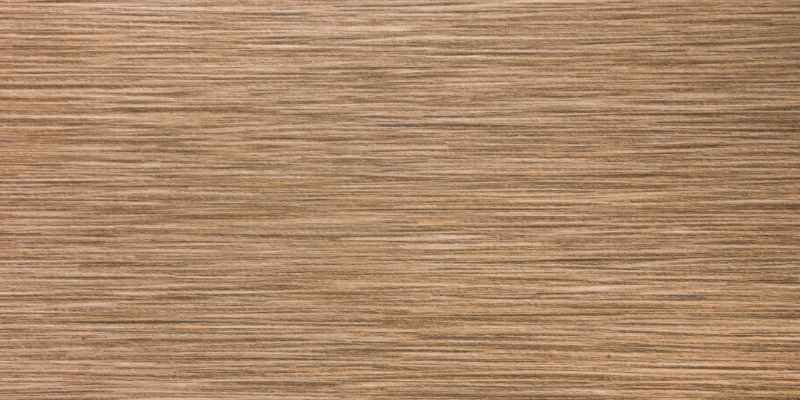Zebrawood is classified as a hardwood due to its strength and density. It is known for its unique striping pattern.
Zebrawood is a highly sought-after hardwood, valued for its bold striping and strength. Frequently used for veneer, tool handles, furniture, boatbuilding, and skis, this wood is both strong and stiff with a high density. While zebrawood can be difficult to work with due to its interlocked grain, it remains a popular choice for various applications.
This exotic wood, sometimes referred to as Zebrano, is often quartersawn to enhance its striking color pattern. Despite being challenging to plane or surface, zebrawood’s distinctive appearance and durability make it a favorite among woodworkers and artisans.
Characteristics Of Zebra Wood
Zebra Wood, a unique hardwood known for its striking appearance and durability, offers a range of characteristics that make it a popular choice in woodworking projects.
Appearance
Zebra Wood, also known as Zebrano, features a distinctive striped grain pattern that resembles the stripes of a zebra, hence its name. The wood has a light golden to creamy background color with dark brown to black stripes that create a visually appealing contrast.
Hardness And Density
Zebra Wood is classified as a hardwood due to its high density and durability. It is tough and resilient, making it suitable for various applications requiring strength and stability. However, this hardness can pose challenges when cutting or working with the wood, particularly due to its interlocked and wavy grain that may lead to tearout.
Common Uses
Zebrawood is frequently used as veneer and is popular for tool handles, furniture, boatbuilding, and skis. The wood is known for its bold striping and strong, stiff nature, making it a versatile choice for various applications.
Woodturning
Zebrawood is a popular choice for woodturning projects due to its unique and bold striping. Its strong and stiff nature, along with its high density, makes it ideal for creating tool handles that require durability and strength. Woodturners can create beautiful and intricate designs with zebrawood, showcasing the wood’s natural patterns through their craftsmanship.
Furniture Making
Zebrawood is frequently used in furniture making, adding a touch of elegance and uniqueness to any piece. Its distinct striping pattern can be showcased through veneers, adding depth and character to cabinets, tables, and other furniture pieces. Despite its density and coarse texture, zebrawood can be worked with to create stunning furniture designs that stand out.
In addition to woodturning and furniture making, zebrawood also finds its place in boatbuilding and ski production. Its strength and durability make it suitable for these applications, where the wood needs to withstand harsh outdoor conditions.
Summary:
Zebrawood, also known as Zebrano, is a hardwood that is frequently used in woodturning and furniture making due to its unique striping pattern. It is strong, stiff, and has a high density, making it suitable for tool handles and durable furniture pieces. Despite its interlocked or wavy grain, zebrawood can be worked with to showcase its bold and distinctive patterns.
Working With Zebra Wood
If you’re thinking of working with zebra wood, it’s important to understand the unique characteristics of this hardwood. Known for its distinctive striped appearance, zebra wood can add a touch of elegance to any project. However, it also comes with a set of challenges that you need to be aware of. In this article, we will discuss the cutting challenges and cost considerations associated with zebra wood.
Cutting Challenges
Cutting zebra wood can be a bit more challenging compared to other types of hardwood. One of the main reasons is its interlocked or wavy grain, which can result in tearout and difficulties while cutting. Due to this confused grain pattern, it is highly recommended to use sharp cutting tools and take extra care to prevent tearout.
Rotary cutting tools like jointers and planers are particularly problematic with zebra wood, as they can further contribute to tearout and surface imperfections. To avoid these issues, it is best to use a sharp hand saw or a high-quality bandsaw with a fine-toothed blade when working with zebra wood.
Cost Considerations
When it comes to cost, zebra wood tends to be fairly expensive compared to other types of hardwood. However, it is not as prohibitively expensive as exotics like Ebony or Rosewood. This makes it a popular choice for those looking for a unique wood with a striking appearance, without breaking the bank.
Keep in mind that zebra wood’s grain pattern and interlocking grain can also make it more challenging to work with, adding to the overall cost and time involved in the project. To ensure a smooth working experience, it is important to factor in the additional effort and potential waste that may occur while working with zebra wood.
| Pros | Cons |
|---|---|
|
|
Despite the challenges and cost considerations, working with zebra wood can be a rewarding experience. The distinctive beauty of this hardwood, with its bold striping and unique appearance, can make any project stand out. By taking the necessary precautions and using the right tools, you can successfully incorporate zebra wood into your woodworking projects.
Comparing Zebra Wood To Other Hardwoods

When looking at different hardwood options, understanding the unique characteristics of each type is essential. Let’s compare Zebra Wood to other popular hardwoods such as Ebony and Rosewood.
Zebra Wood Vs. Ebony
Zebra Wood, known for its distinct grain pattern, is often compared to Ebony, a dense and dark hardwood. While Ebony is prized for its luxurious appearance, Zebra Wood stands out with its striking contrast of dark brown stripes on a creamy background.
Zebra Wood Vs. Rosewood
Rosewood, another sought-after hardwood, is often compared to Zebra Wood for its rich color and durability. However, Zebra Wood’s unique striped pattern sets it apart, making it a popular choice for furniture and decorative applications.
Zebra Wood Identification
When it comes to identifying zebra wood, there are a few key characteristics to look out for. These include its unique wood grain patterns, as well as its distinct features that set it apart from other hardwoods.
Wood Grain Patterns
Zebra wood is known for its striking wood grain patterns, which resemble the stripes of a zebra. The grain is typically interlocked or wavy, giving the wood a visually interesting and dynamic appearance. This unique pattern is what makes zebra wood highly sought after in the world of woodworking and furniture making.
Unique Features
In addition to its eye-catching grain patterns, zebra wood also possesses other distinct features that make it easily recognizable. This hardwood has a somewhat coarse texture and is heavy in weight, indicating its durability and strength. It is often quartersawn to showcase its alternating color pattern, further enhancing its visual appeal.
It is worth noting that zebra wood can be quite challenging to work with due to its interlocking grain. This makes it difficult to plane or surface, and care must be taken to minimize tearout. Rotary cutting tools, such as jointers and planers, can pose challenges when working with zebra wood.
Despite its unique appearance and desirable qualities, zebra wood tends to be fairly expensive, although not as prohibitively expensive as other exotic hardwoods like ebony or rosewood. It is commonly used as veneer and can be found in tool handles, furniture, boatbuilding, and even skis.
Sourcing Zebra Wood
Are you considering working with Zebra Wood for your next project? Let’s explore how you can source this unique hardwood.
Online Suppliers
When looking to purchase Zebra Wood online, there are several reputable suppliers that you can explore for a wide selection of this exotic wood.
- Woodworkers Source: A well-known online retailer offering a variety of Zebra Wood options for woodworking projects.
- Keim Lumber: Another trusted online supplier known for their exotic wood library that includes Zebrawood.
Local Options
If you prefer to source Zebra Wood locally, there are several options you can consider within your community.
- Specialty Wood Stores: Visit local specialty stores that cater to woodworking enthusiasts for a chance to find Zebra Wood.
- Furniture Workshops: Check with local furniture makers who may have scraps or offcuts of Zebra Wood available for purchase.
Whether you choose to shop online or explore local options, sourcing Zebra Wood can add a touch of uniqueness to your woodworking projects.
Frequently Asked Questions On Is Zebra Wood A Hardwood
What Is Zebrawood Good For?
Zebrawood is great for veneer, tool handles, furniture, boatbuilding, and skis due to its strength and unique striping.
What Is The Hardness Of Zebrawood?
Zebrawood is a heavy, strong hardwood with a fairly high density. It has a somewhat coarse and wavy grain, making it difficult to work with.
Is Zebrawood Hard To Cut?
Yes, Zebrawood is hard to cut because of its interlocked grain, which can lead to tearout and difficulty in planing.
Is Zebrano Wood Expensive?
Zebrawood tends to be fairly expensive, though not as prohibitive as some other exotic woods.
Conclusion
Zebrawood is a strong and dense hardwood often used for its unique striping. While it may be challenging to work with due to its interlocked grain, its versatility in various applications like furniture and tool handles makes it a sought-after choice for woodworking projects.
Choose Zebrawood for beautiful, distinctive creations.


